Table of Contents
ToggleHumanity has always been fascinated by the stars, driving significant advancements in science and technology through our quest to explore them. From ancient celestial observations to modern deep space missions, our journey has been marked by numerous milestones. This article explores the history of space exploration, highlighting key innovations, major missions, and their impact on our understanding of the universe.
Key figures like Robert Goddard and Wernher von Braun played crucial roles in developing rockets and space technology. The launch of Sputnik 1 in 1957 initiated the space age, leading to many achievements. Including the first human and first woman in space, and the first spacewalk. The space age has also seen significant advancements from space agencies like NASA and the Soviet space program and international cooperation through organizations like the European Space Agency (ESA) and the International Space Station (ISS).
Key Takeaways
-
The space race between the United States and the Soviet Union marked the beginning of modern space exploration, leading to the launch of the first satellites and crewed missions to the moon.
-
Mars exploration has been a significant focus, with numerous missions aimed at understanding the planet’s geology and potential for life.
-
International collaboration has played a crucial role in space exploration, exemplified by the International Space Station (ISS) and partnerships between various space agencies.
-
The private space industry, led by SpaceX and Blue Origin, has revolutionized space exploration with innovations in reusable rockets and commercial satellite launches.
-
Prospects of space exploration include ambitious plans for Mars colonization, exploring exoplanets, and advancements in space technology that could make interstellar travel a reality.
Early Dreams of Space Travel
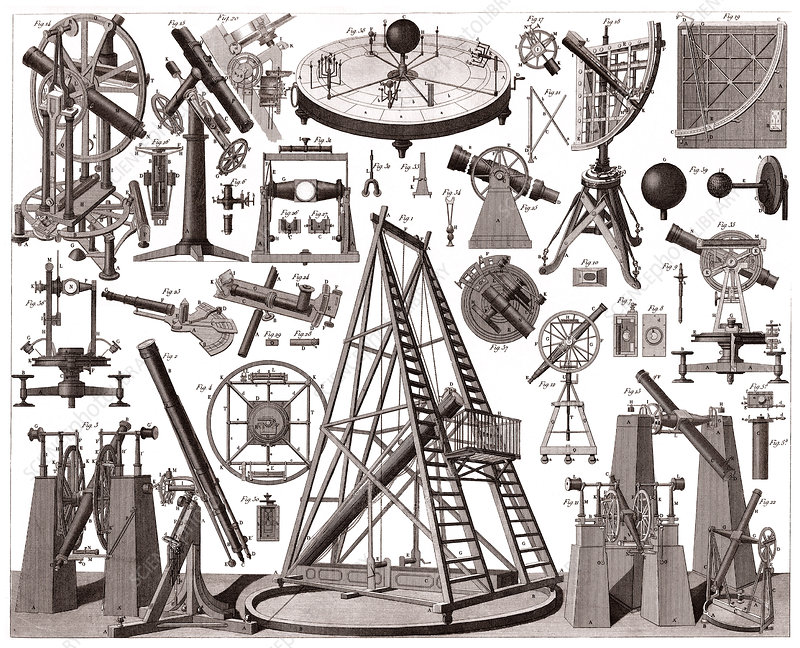
Humankind’s fascination with space predates the technology that would eventually take us there. For centuries, the stars served as both a source of wonder and a navigational tool, inspiring dreams of reaching beyond our earthly bounds.
Ancient Astronomers and Their Visions of the Cosmos
Early civilizations like the Babylonians, Egyptians, and Greeks made significant contributions to astronomy. They observed the movements of celestial bodies, laying the groundwork for our understanding of the universe. While their tools were simple, their observations were remarkably accurate, predicting eclipses and identifying planets. The Babylonians developed sophisticated astronomical tables and calendars, the Egyptians aligned their pyramids with the stars, demonstrating a deep understanding of celestial patterns, and the Greeks proposed heliocentric models of the solar system, challenging the prevailing geocentric view.
Science Fiction Pioneers
As scientific understanding grew, so did the imagination of writers. The 19th and early 20th centuries saw the emergence of science fiction, a genre that fueled the public’s fascination with space travel. Jules Verne’s “From the Earth to the Moon” (1865) and H.G. Wells’ “The First Men in the Moon” (1901) are notable examples of science fiction works that explored the concept of space travel. These early works of science fiction, while fantastical, sparked conversations and inspired scientific inquiry, helping shape the public’s perception of space exploration and planting the seeds for future endeavors.
The Rise of Rocketry: The Early 20th Century
The theoretical foundations for space travel were established in the early 20th century, thanks to the pioneering work of scientists like Konstantin Tsiolkovsky, Robert Goddard, and Wernher von Braun. Tsiolkovsky developed the rocket equation, which describes the relationship between rocket mass, velocity, and propellant. Goddard launched the first liquid-fueled rocket in 1926, and von Braun, who worked in Nazi Germany’s rocket development program, helped design and co-develop the V-2 rocket at Peenemünde during World War II.
The V-2 rocket was the first long-range guided missile and the first rocket to reach space, reaching an altitude of 80 kilometers (50 miles) in 1944. After World War II, von Braun and his team were brought to the United States, where they continued their work on rocketry and played a crucial role in the development of the Saturn V rocket that took astronauts to the Moon during the Apollo program. The work of these pioneers laid the foundation for modern space exploration and paved the way for the Space Age.
The Space Age

The space age began on October 4, 1957, when the Soviet Union launched Sputnik, the first artificial satellite to orbit Earth. This marked the beginning of a new era in space exploration, as both the Soviet Union and the United States began to compete in the space race. The space race was a competition for prestige and spectacle, driven by the Cold War between the two superpowers. The Soviet Union’s launch of Sputnik was a significant milestone, as it demonstrated the capability to launch a satellite into space and marked the beginning of the space age.
The United States responded to the Soviet Union’s launch by launching its artificial satellite, Explorer, on January 31, 1958. Explorers carried several instruments into space for conducting science experiments, including a Geiger counter for detecting cosmic rays. This was a significant achievement, as it marked the first time a satellite had been launched into space by the United States.
The space age also saw the first human in space, Yuri Gagarin, who made one orbit around Earth on April 12, 1961. A little over three weeks later, NASA launched astronaut Alan Shepard on a suborbital trajectory—a trip that enters space but does not circle the entire planet—instead of an orbital one. Shepard spent a little over fifteen minutes on suborbital flight.
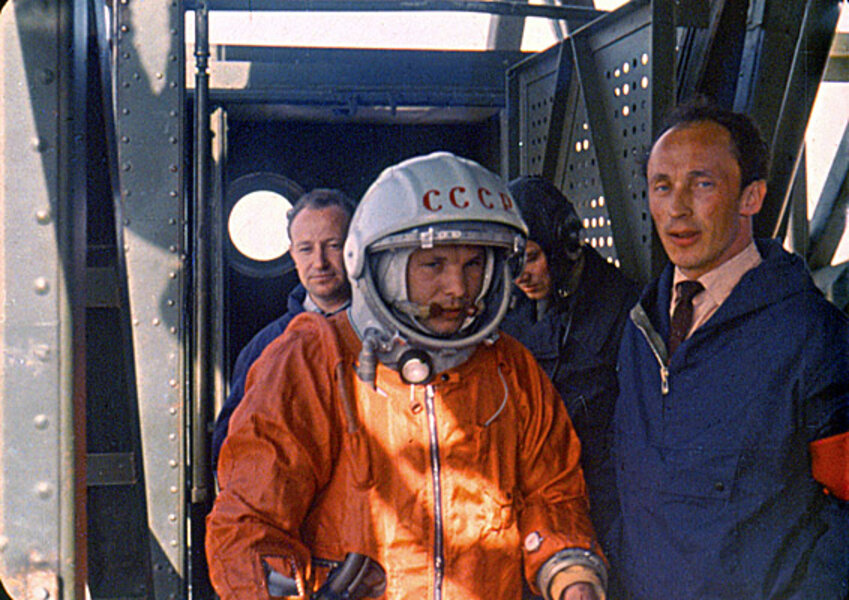
The Soviet Union continued to push the boundaries of space exploration, achieving milestones such as the first dog in space, Laika, and the first woman in space, Valentina Tereshkova. The United States also made significant progress, launching the first American in space, John Glenn, on February 20, 1962.
However, the Soviet Union was not satisfied with just achieving milestones. They set their sights on the ultimate goal: landing a man on the moon. This marked the beginning of a new era in space exploration, as both the Soviet Union and the United States continued to push the boundaries of what was thought possible.
The United States, under the leadership of President John F. Kennedy, challenged themselves to land a man on the moon and return him safely to Earth. This goal was achieved on July 20, 1969, when NASA’s Apollo 11 mission successfully landed astronauts Neil Armstrong and Edwin “Buzz” Aldrin on the moon’s surface. Armstrong became the first human to set foot on the moon, marking a historic moment in the space race.
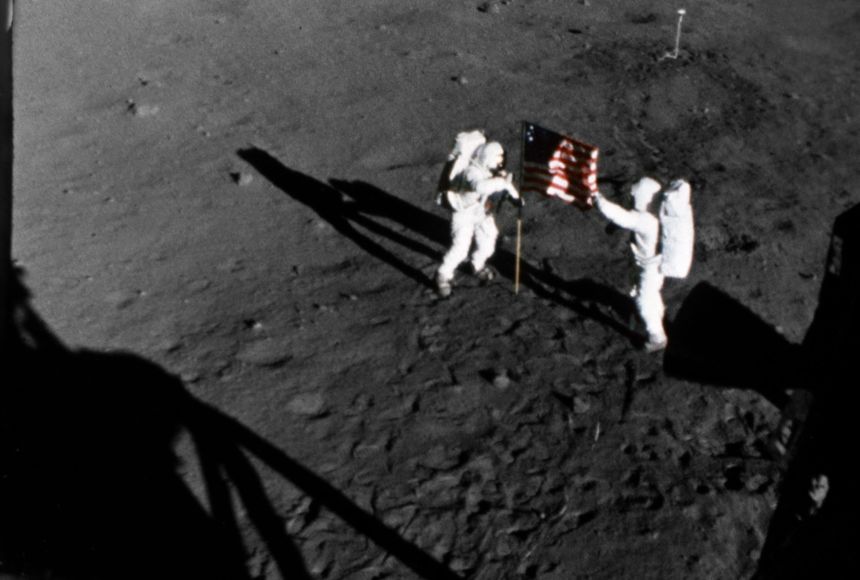
The Soviet Union, on the other hand, faced internal disagreements about sending a human to the moon. The death of their chief designer, Sergei Korolev, in 1966, further hindered their progress. Despite these challenges, the Soviet Union continued to make significant contributions to space exploration, including the launch of the first space station, Salyut 1, in 1971.
The Expanding Frontiers of Space Exploration
While the Moon landing was a monumental achievement, it was just the beginning of humanity’s exploration of the cosmos. The decades following the Apollo missions saw a shift in focus towards robotic exploration of the solar system, the establishment of space stations, and the development of reusable spacecraft. These advancements not only expanded our knowledge of the universe but also paved the way for future human spaceflight and the potential for interplanetary travel.
Exploring the Solar System with Probes and Rovers
The 1970s and 1980s marked a golden age of robotic exploration, with probes venturing to distant planets and moons, expanding our knowledge of the solar system in unprecedented ways.
Pioneer 10 and 11: Launched in the early 1970s, these spacecraft were the first to traverse the asteroid belt and conduct flybys of Jupiter and Saturn. They provided invaluable data on these gas giants and their moons, revolutionizing our understanding of the outer solar system.
Voyager 1 and 2: Launched in 1977, these iconic probes embarked on a grand tour of the outer solar system, exploring Jupiter, Saturn, Uranus, and Neptune. They captured stunning images of these planets and their moons, revealing new details about their atmospheres, rings, and magnetic fields. Voyager 1, having left our solar system, continues to transmit data from interstellar space, providing insights into the unexplored regions beyond our Sun’s influence.
Mars Rovers: Spirit, Opportunity, Curiosity, and Perseverance have been robotic pioneers on the surface of Mars. They have explored vast distances, analyzed rocks and soil samples, and searched for evidence of past or present life. Their discoveries have significantly enhanced our understanding of the Red Planet’s geology, climate history, and potential for habitability.
Space Stations: Mir, Skylab, TSS, and the International Space Station

The establishment of space stations marked a significant step towards long-duration human presence in space. These orbiting laboratories have provided invaluable platforms for scientific research, technological development, and international collaboration, paving the way for future space exploration.
Skylab: Launched by NASA in 1973, Skylab was the United States’ first space station. It hosted three crews for a total of 171 days, conducting a wide range of experiments in astronomy, Earth observation, and human physiology.
Mir: The Soviet Union’s Mir space station, operational from 1986 to 2001, was a testament to human resilience and adaptability in space. It served as a home and workplace for cosmonauts and astronauts from various countries, facilitating numerous scientific experiments and technological demonstrations.
International Space Station (ISS): A collaborative project involving five space agencies representing 15 countries, the ISS is the largest and most complex space station ever built. Since its launch in 1998, it has been continuously occupied, serving as a microgravity laboratory for research in various fields, including biology, physics, and materials science. The ISS represents a shining example of international cooperation in space exploration.
Tiangong Space Station (TSS): Launched in 2021, the TSS is China’s first space station and has been occupied since 2022. It has hosted several crews and has conducted various scientific experiments and technological demonstrations.
As of 2024, there are two fully operational space stations: the International Space Station (ISS) and China’s Tiangong Space Station (TSS). The ISS has been continuously occupied since 2000, and the TSS has been occupied since 2022. There are also several planned and proposed space stations, including NASA’s Gateway and the European Space Agency’s (ESA) Columbus module.
Modern Era of Space Exploration
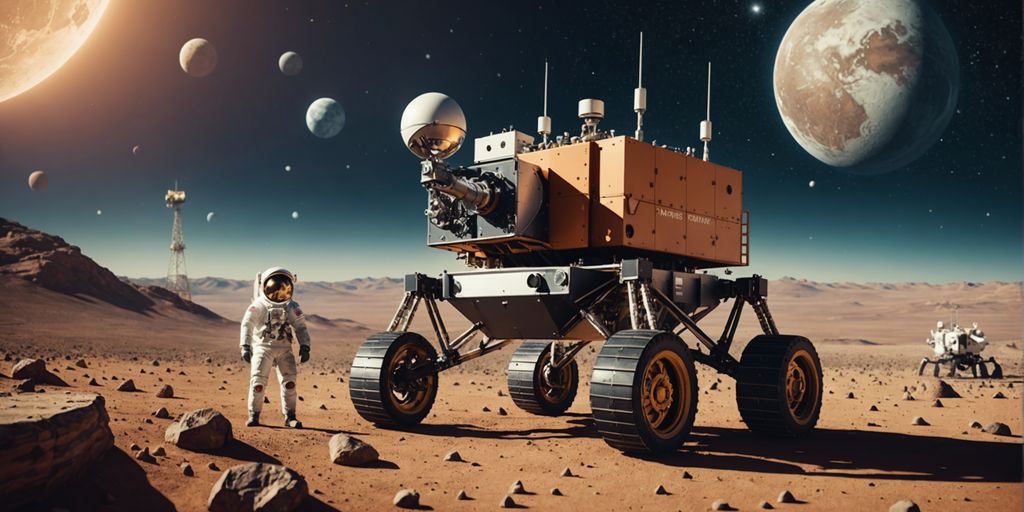
The modern era of space exploration has seen significant advancements in technology, leading to increased efficiency and cost-effectiveness in space travel. This section will explore the developments in reusable launch vehicles, spacecraft, and suborbital vehicles that have revolutionized the space industry.
Reusable Launch Vehicles
Reusable launch vehicles have become a crucial component of modern space exploration. These vehicles are designed to be recovered and reflown, reducing the cost of access to space and enabling more frequent and cost-effective missions. These are some examples of modern reusable rockets:
Falcon 9 and Falcon Heavy: Developed by SpaceX, these rockets have been used for a variety of missions, including satellite launches, cargo resupply to the International Space Station, and crewed missions to the ISS.
Delta IV Heavy: Developed by United Launch Alliance, this rocket has been used for a variety of missions, including satellite launches and cargo resupply to the ISS.
Ariane 6: Developed by the European Space Agency, this rocket is designed to be a more cost-effective and efficient alternative to previous Ariane rockets.
Spacecraft
Spacecraft have also undergone significant advancements in recent years. The Dragon spacecraft, developed by SpaceX, has been used for cargo resupply missions to the International Space Station. The Starliner spacecraft, developed by Boeing, is another example of a spacecraft that has been designed for reuse.
Suborbital Vehicles
Suborbital vehicles have also seen significant advancements. The New Shepard spacecraft, developed by Blue Origin, has successfully demonstrated its capabilities by reaching space and returning to Earth. The SpaceShipTwo spacecraft, developed by Virgin Galactic, is another example of a suborbital vehicle that has reached space.
International Collaboration
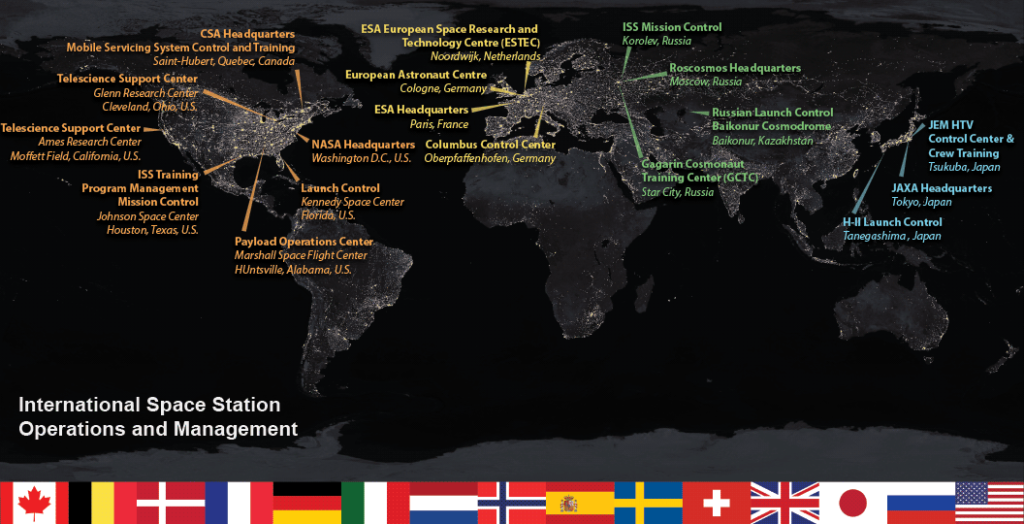
ISS and Cooperation
The International Space Station (ISS) stands as a monumental achievement in global cooperation. It brings together space agencies from the United States, Russia, Europe, Japan, and Canada. This collaboration has enabled continuous human presence in space since 2000, fostering scientific research and technological advancements.
European Space Agency
The European Space Agency (ESA) was established in 1975 and has since become a key player in space exploration. ESA collaborates with various countries, including China, Japan, and India, to carry out space missions. The agency’s efforts have significantly contributed to our understanding of the universe.
International Space Exploration Coordination Group
The International Space Exploration Coordination Group (ISECG) facilitates cooperation among space agencies worldwide. By the second decade of the 21st century, more than 50 countries had space agencies or other government bodies carrying out space activities. This group aims to enhance the benefits of space exploration for all humankind.
As the many benefits of space activity have become evident, other countries have joined the Soviet Union and the United States in developing their space programs.
Private Space Industry
SpaceX Innovations
SpaceX, founded by Elon Musk, has been a game-changer in the private space industry. The company achieved the first privately-funded spacecraft to reach orbit and has continued to innovate with reusable rockets, significantly reducing the cost of space travel. SpaceX’s Dragon spacecraft was the first commercial spacecraft to deliver cargo to the International Space Station (ISS).
Blue Origin Ventures
Blue Origin, founded by Jeff Bezos, focuses on developing technologies to enable private human access to space. The company has made significant strides with its New Shepard suborbital rocket, designed for space tourism. Blue Origin is also working on the New Glenn orbital launch vehicle, which aims to compete with SpaceX’s Falcon rockets.
Commercial Satellite Launches
The private sector has seen a surge in commercial satellite launches, driven by companies like SpaceX and Blue Origin. These launches are not only for telecommunications but also for Earth observation, scientific research, and even space tourism. The timeline of private spaceflight shows a rapid increase in the number of commercial launches, highlighting the growing role of private companies in space exploration.
The private space industry has revolutionized space exploration, making it more accessible and affordable than ever before.
|
Company |
Key Achievements |
|---|---|
|
SpaceX |
First privately-funded spacecraft to reach orbit |
|
Blue Origin |
Development of New Shepard and New Glenn rockets |
|
Axiom Space |
Plans for commercial space stations |
|
Bigelow |
Development of inflatable space habitats |
In areas where the private sector could profit from activities in space, most notably the use of satellites as telecommunication relays, commercial space ventures have flourished.
Future of Space Exploration
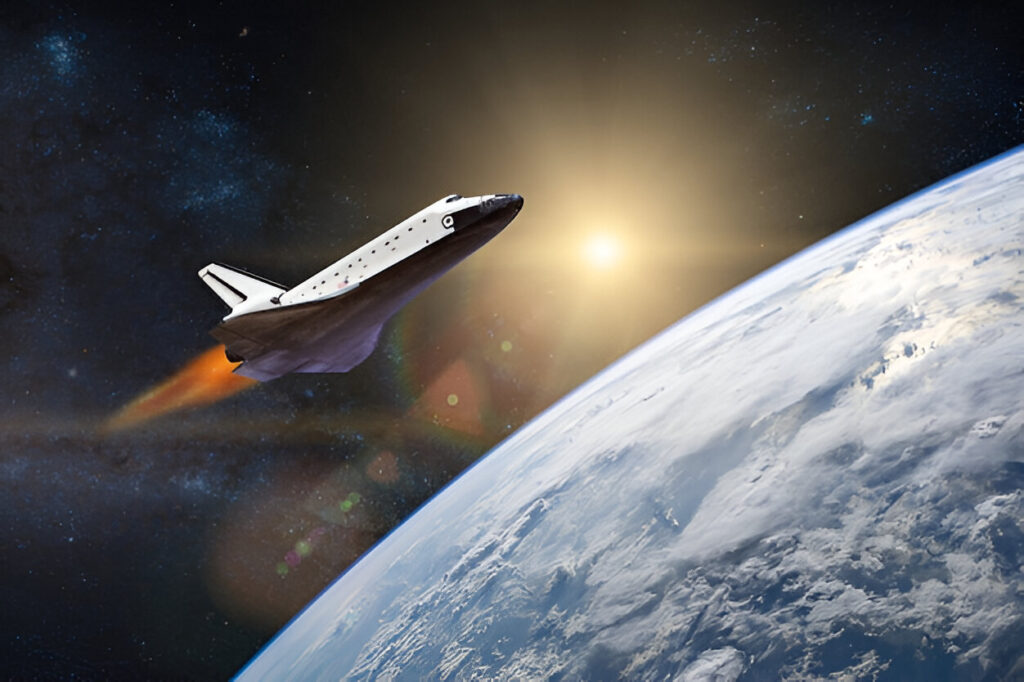
Mars Colonization Plans
Mars has always been a focal point of modern space exploration. NASA is reimagining the future of Mars exploration, driving new scientific discoveries, and preparing for humans on Mars. The goal is to send humans to the Red Planet in the 2030s. This ambitious plan involves multiple stages, including robotic missions, habitat construction, and sustainable living solutions.
Exploring Exoplanets
The search for exoplanets has gained momentum with advanced telescopes and space missions. These efforts aim to identify potentially habitable planets beyond our solar system. The James Webb Space Telescope, set to launch soon, will play a crucial role in this quest. Discovering new worlds could provide insights into the origins of life and the potential for future human habitation.
Advancements in Space Technology
Future space exploration involves both telescopic exploration and the physical exploration of space by robotic spacecraft and human spaceflight. Key advancements include:
-
Anti-matter propulsion
-
Nuclear power
-
Beamed propulsion
These technologies promise to revolutionize deep space exploration, making it more efficient and feasible.
The future of space exploration is not just about reaching new destinations but also about developing the technologies that will make these journeys possible.
Conclusion
The history of space exploration is a testament to human ingenuity, perseverance, and the relentless pursuit of knowledge. From the early days of the Space Race and the monumental Apollo missions to the collaborative efforts seen in the International Space Station, humanity has continuously pushed the boundaries of what is possible. The advent of the private space industry has further accelerated advancements, making space more accessible than ever before. As we look to the future, plans for Mars colonization, the exploration of exoplanets, and groundbreaking advancements in space technology promise to take us even further. The journey of space exploration is far from over; it is an ever-evolving saga that continues to inspire and unite people across the globe.
Frequently Asked Questions
What was the Space Race?
The Space Race was a period of intense competition between the United States and the Soviet Union to achieve significant milestones in space exploration, such as launching the first artificial satellite and landing a man on the moon.
Who launched the first artificial satellite?
The Soviet Union launched the first artificial satellite, Sputnik 1, on October 4, 1957.
What were the Apollo Missions?
The Apollo Missions were a series of space missions conducted by NASA aimed at landing humans on the Moon and bringing them safely back to Earth. The most famous of these was Apollo 11, which successfully landed Neil Armstrong and Buzz Aldrin on the Moon in 1969.
What is the International Space Station (ISS)?
The International Space Station (ISS) is a space station, or habitable artificial satellite, that orbits Earth. It serves as a research laboratory for a wide range of scientific and technological experiments and is a joint project involving multiple countries, including the United States, Russia, Japan, Canada, and European countries.
What is SpaceX known for?
SpaceX is known for its innovations in the private space industry, including the development of the Falcon and Starship rockets, as well as the Dragon spacecraft. SpaceX has also made significant advancements in reusable rocket technology.
What are the Voyager Missions?
The Voyager Mission consist of two spacecraft, Voyager 1 and Voyager 2, launched by NASA in 1977 to study the outer planets of our solar system and beyond. Both spacecraft have provided invaluable data about Jupiter, Saturn, Uranus, and Neptune, and continue to send information from interstellar space.
What are the plans for Mars colonization?
Plans for Mars colonization involve sending humans to Mars to establish a permanent settlement. Various space agencies and private companies, including NASA and SpaceX, are working on developing the technology and missions required to achieve this goal.
What advancements are being made in space technology?
Advancements in space technology include the development of more efficient propulsion systems, reusable rockets, advanced robotics, and artificial intelligence for space exploration. These advancements aim to make space exploration more sustainable and accessible.
